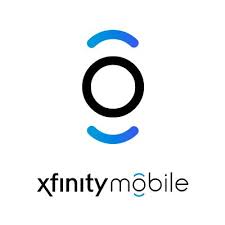 Comcast and Charter Communications are losing money on their cell service plans because their partner, Verizon Wireless, sets its wholesale rates too high, making certain the two companies cannot cannibalize Verizon’s own customers for long.
Comcast and Charter Communications are losing money on their cell service plans because their partner, Verizon Wireless, sets its wholesale rates too high, making certain the two companies cannot cannibalize Verizon’s own customers for long.
MoffettNathanson analyst Craig Moffett claims the cable industry’s 2012 $3.9 billion sale of wireless spectrum to Verizon Wireless, which included an agreement allowing the two cable operators to resell Verizon Wireless service, turned out to benefit Verizon more than Comcast and Charter.
The problem is Verizon set its own price for service high enough to guarantee the two cable operators will have a hard time outcompeting Verizon Wireless. Moffett estimates Verizon is currently charging the two operators about $5/GB and around $5/month per customer for unlimited voice and texting. According to Moffett’s calculations, only the pay-per-gigabyte plans have any chance of marginal profitability. Comcast charges $12/GB for its pay-per-usage mobile plan; Charter charges $14/GB for essentially the same service. Both plans include unlimited voice and texting.
Things quickly get unprofitable when a customer signs up for Spectrum Mobile’s or Xfinity Mobile’s Unlimited plan (both $45/mo). Once a customer uses more than 8GB of 4G LTE data per month, Verizon’s wholesale price, including the cost of voice and texting, reaches the same amount those companies are charging customers for service. That does not include any of the ancillary costs Comcast and Charter have to pay to support and market their wireless plans.
![]() Moffett believes the two companies overestimated how often subscribers would offload traffic to Wi-Fi, and the future potential for more solid Wi-Fi coverage “looks cloudy.” The problem, as Moffett sees it, appears to be the cable industry’s loss of interest building out their metro Wi-Fi networks. Moffett called the joint CableWiFi project between Comcast, Charter, Cox, and Altice USA “a bust” because the members of the coalition have largely stopped investing in new hotspot installations. That leaves about 500,000 working hotspots around the country, a number that has remained unchanged for two years. Only in-business Wi-Fi continues to grow, as business cable broadband customers are offered the opportunity to provide Wi-Fi service for their customers. But those hotspots don’t typically offer outdoor coverage.
Moffett believes the two companies overestimated how often subscribers would offload traffic to Wi-Fi, and the future potential for more solid Wi-Fi coverage “looks cloudy.” The problem, as Moffett sees it, appears to be the cable industry’s loss of interest building out their metro Wi-Fi networks. Moffett called the joint CableWiFi project between Comcast, Charter, Cox, and Altice USA “a bust” because the members of the coalition have largely stopped investing in new hotspot installations. That leaves about 500,000 working hotspots around the country, a number that has remained unchanged for two years. Only in-business Wi-Fi continues to grow, as business cable broadband customers are offered the opportunity to provide Wi-Fi service for their customers. But those hotspots don’t typically offer outdoor coverage.
Comcast has grown its Xfinity Mobile service to 1.2 million lines since launching in 2017 and Spectrum Mobile, which began in last September, had attracted almost 134,000 customers by the end of 2018.


 Subscribe
Subscribe
Wow… If Spectrum built out their network the way they told NY state they were going to build out their network, then the future for WiFi coverage might not be so cloudy.